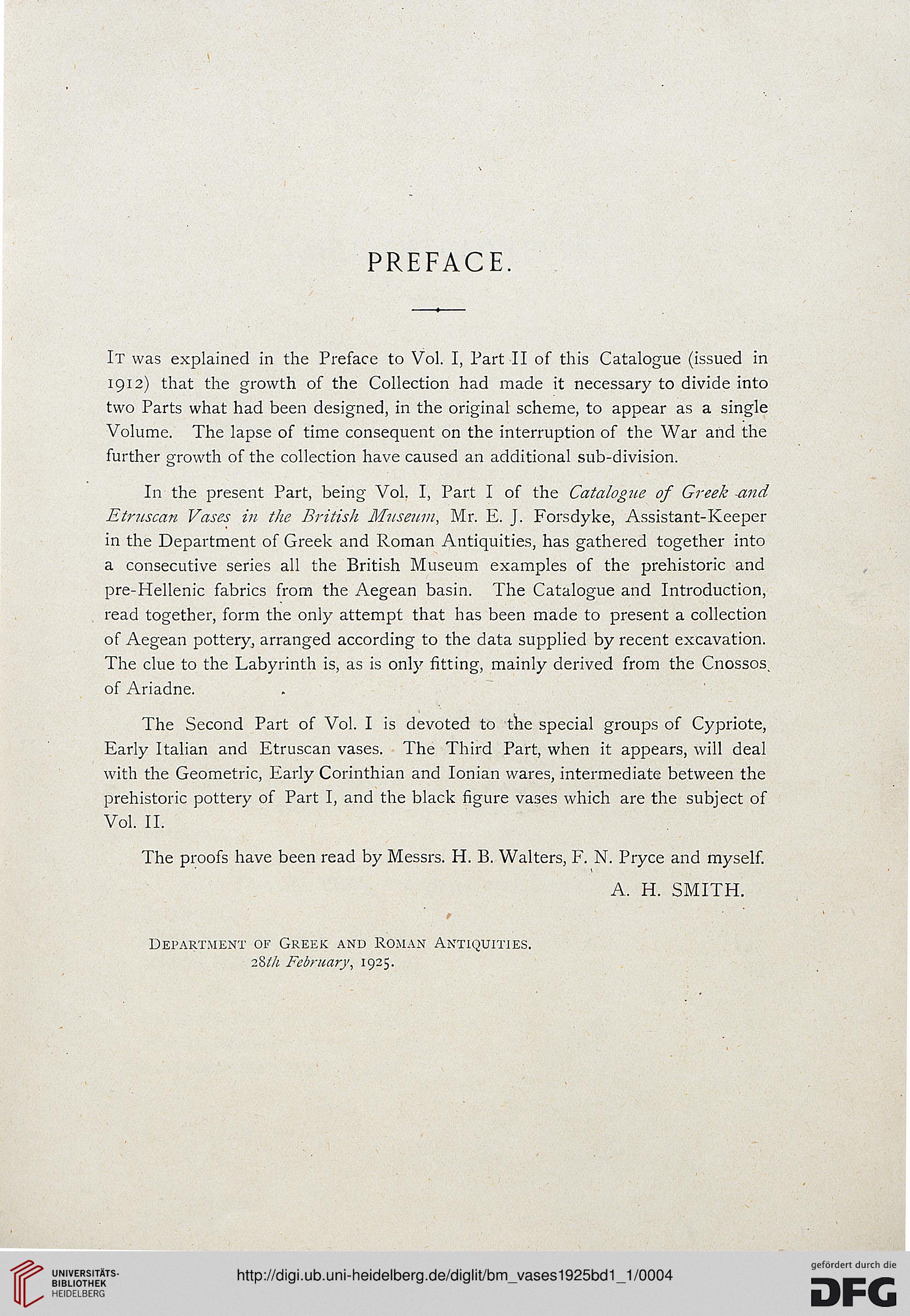PREFACE
It was explained in the Preface to Vol. I, Part II of this Catalogue (issued in
1912) that the growth of the Collection had made it necessary to divide into
two Parts what had been designed, in the original scheme, to appear as a single
Volume. The lapse of time consequent on the interruption of the War and the
further growth of the collection have caused an additional sub-division.
In the present Part, being Vol. I, Part I of the Catalogue of Greek -and
Etruscan Vases in the British Museum, Mr. E. J. Forsdyke, Assistant-Keeper
in the Department of Greek and Roman Antiquities, has gathered together into
a consecutive series all the British Museum examples of the prehistoric and
pre-Hellenic fabrics from the Aegean basin. The Catalogue and Introduction,
read together, form the only attempt that has been made to present a collection
of Aegean potteryj arranged according to the data supplied by recent excavation.
The clue to the Labyrinth is, as is only fitting, mainly derived from the Cnossos_
of Ariadne.
The Second Part of Vol. I is devoted to the special groups of Cypriote,
Early Italian and Etruscan vases. The Third Part, when it appears, will deal
with the Geometric, Early Corinthian and Ionian wares, intermediate between the
prehistoric pottery of Part I, and the black figure vases which are the subject of
Vol. II.
The proofs have been read by Messrs. H. B. Walters, F. N. Pryce and myself.
A. H. SMITH.
Department of Greek and Roman Antiquities.
28/A February, 1925.
It was explained in the Preface to Vol. I, Part II of this Catalogue (issued in
1912) that the growth of the Collection had made it necessary to divide into
two Parts what had been designed, in the original scheme, to appear as a single
Volume. The lapse of time consequent on the interruption of the War and the
further growth of the collection have caused an additional sub-division.
In the present Part, being Vol. I, Part I of the Catalogue of Greek -and
Etruscan Vases in the British Museum, Mr. E. J. Forsdyke, Assistant-Keeper
in the Department of Greek and Roman Antiquities, has gathered together into
a consecutive series all the British Museum examples of the prehistoric and
pre-Hellenic fabrics from the Aegean basin. The Catalogue and Introduction,
read together, form the only attempt that has been made to present a collection
of Aegean potteryj arranged according to the data supplied by recent excavation.
The clue to the Labyrinth is, as is only fitting, mainly derived from the Cnossos_
of Ariadne.
The Second Part of Vol. I is devoted to the special groups of Cypriote,
Early Italian and Etruscan vases. The Third Part, when it appears, will deal
with the Geometric, Early Corinthian and Ionian wares, intermediate between the
prehistoric pottery of Part I, and the black figure vases which are the subject of
Vol. II.
The proofs have been read by Messrs. H. B. Walters, F. N. Pryce and myself.
A. H. SMITH.
Department of Greek and Roman Antiquities.
28/A February, 1925.





